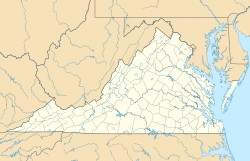Military hospital
On December 1, 1861, Mansion House Hospital was opened as a General Hospital. [2] Parts of the nearby Bank of Alexandria building at 133 North Fairfax Street were also used as part of the hospital, as were parts of the Carlyle House behind the hotel. [4] The facility could hold 700 soldiers as patients. [5]
The hospital used female nurses, which by the spring of 1862, resulted in harsh treatment and prejudice towards nurses based on their gender. Nurses such as Mary Phinney, however, kept accounts and “helped set the stage for women not just in nursing, but in the medical profession as a whole.” [6]
In March 1862, there was a court case concerning conditions at The Mansion Hospital, concerning the behavior of surgeon J. B. Porter, after allegations of mistreatment of patients were published in the New-York Tribune and Washington National Republican on February 6, 1862. A Court of Assembly met on the issue in February 1862 led by General William H. French, and determined that the complaints were not valid, and that “the Court, from its own observation, cannot speak too highly of the condition of the Mansion Hospital, which is exhibited in the fact, that out of 500 patients, there have been but 32 deaths.” [7]
On September 20, 1862, people began using the hospital as a First Division General Hospital, and it was the largest of the confiscated buildings used as a military hospital in the city, [2] out of 30 total converted hospitals in the city. [6] It could hold up to 700 sick and wounded soldiers. [3] The hospital was the largest Union hospital in the region, with 500 beds. [2]
After the war
Following the surrender of the Confederacy on April 9, 1865, the Mansion House Hospital was returned to the Greens and reopened as a hotel. [6] First again called the Mansion House Hotel, it was then acquired by new proprietors in the early 1880s and renamed Braddock House. [3] By 1886, it was advertised as the only first-class hotel in the city. [3]
By the 1970s, the building was vacant and deteriorating. [2] The Northern Virginia Regional Park Authority acquired the entire property, and – despite protests from some preservationists – in early 1973 [3] the expanded portion of the building – then known as the Carlyle Apartments – was torn down in order to open Carlyle House to view from Fairfax Street and create open area for Carlyle House Historic Park. [5] However, a portion of the old hospital was partly preserved in the original bank building. [2] which was added to the National Register of Historic Places in 1973.



